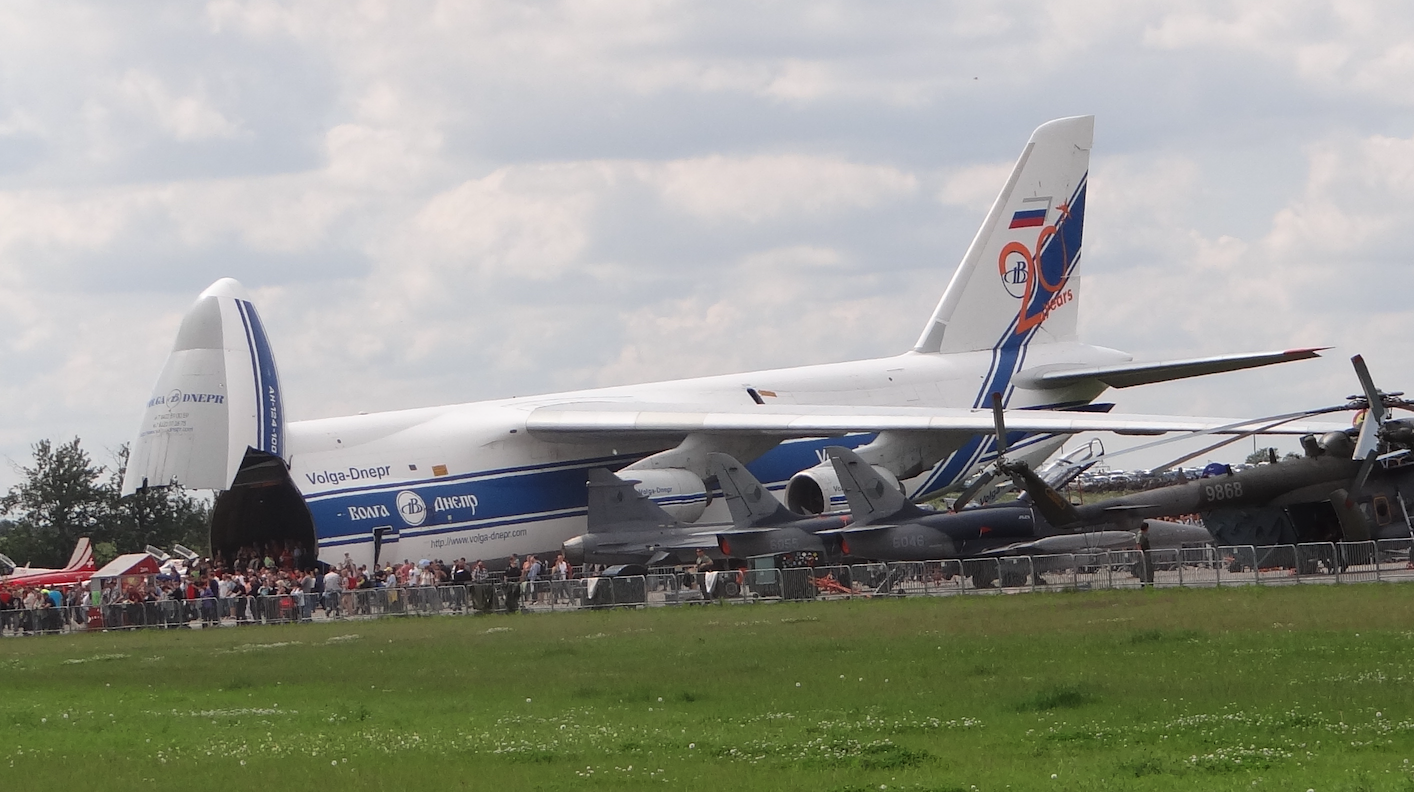Kraków 1982-10-23
Antonow An-124 Rusłan. 1982 year.
Antonov An-124 Ruslan for heavy transport in 1982, at the time when the Moscow state was called CCCP. The aircraft was registered with OKB Antonov. He made his first flight on December 24, 1982. Serial production in the period 1982 – 2004. The company continued, 55 aircraft were built.
The main constructor of the An-124 aircraft was engineer Wiktor Tolmaszew. The project had the designation Izdielenie 400. In the 70-years of the twentieth century, the military of the Moscow state ordered the development of a heavy transport aircraft, due to the poor performance of the An-22 transport aircraft. The biggest problem for CCCP was the lack of appropriate engines. Attempts to obtain suitable engines in the West have failed. Soviet engineers managed to develop the Progress D-18 engine, with a thrust of 190 kN. The engine consumed a lot of fuel, but the plane could cover a distance of 3,500 km, with a payload of 80,000 kg.
Design work began in 1971 and the construction of the prototype began in 1973. The work proceeded slowly as the Soviets had difficulties in resolving the next difficulties. More than one hundred institutes and factories had to join the program, and the cooperation did not go well, due to the individual interests of individual entities. The construction of the first airframe began in 1979. The first flight took place on December 24, 1982. The An-124 planes were produced in parallel by two plants: the Aviastar-SP company (former Ulyanovsk Aviation Industrial Complex) in Ulyanovsk, Russia and the Kiev Aviation Plant AVIANT in Ukraine.
The An-124 aircraft is the second largest transport aircraft in the world, after the An-225 Miria. The An-225 Miria aircraft was built in a single copy and was destroyed during the Moscow state’s aggression against Ukraine in 2022. The An-225 aircraft was built for the transport of the Buran spacecraft. After the collapse of the space program, the An-225 aircraft was converted into a transport aircraft. Compared to the An-124, it only had a loading door in the front of the fuselage. The An-225 aircraft was larger than the An-124. The wings received additional segments that increased the surface and lengthened the wings. The tail was different. An-225 had 6 engines.
After the break-up of the CCCP in 1990, the An-124 planes were divided among individual countries; Moscow State and Ukraine. In the 1990s, a plant in Ukraine completed the construction of several aircraft. After a few years, in 2008, both countries intended to resume production of An-124 aircraft for commercial purposes, but the situation between the two countries was tense and cooperation was not undertaken. In 2019, there were approximately 25 An-124 aircraft in commercial service.
Construction An-124.
The An-124 Ruslan aircraft is a large, strategic, four-engine transport aircraft. Externally, it has many similarities to the American Lockheed C-5 Galaxy. The An-124 is powered by four Lotarev D-18 turbofan engines, each of which can generate up to 229 kN of thrust.
The main landing gear of the An-124 aircraft consists of five pairs of legs with double wheels. The front undercarriage consists of two legs with double wheels. The front undercarriage has a shortening height for easy loading of bulky goods. The hold is equipped with an on-board crane capable of lifting up to 30,000 kg of cargo. Goods weighing 120,000 kg can be loaded into the hold. The load compartment of the An-124 measures 36 m × 6.4 m × 4.4 m (118 × 21 × 14 ft), which is approximately 2,000 m2.
Data T-T An-124:
A crew of 6 people (pilot, co-pilot, navigator, chief flight engineer, electrician flight mechanic, radio operator). Length 69.10 m (226 ft 8 in). Wingspan 73.30 m (240 ft 6 in). Height 21.08 m (69 ft 2 in). Wing area 628 m2 (6,760 sq ft). Wing lengthening 8.6. Curb weight 181,000 kg (399,037 lb). Maximum take-off weight 402,000 kg (886,258 lb). Powerplant 4 Progress D-18T turbofan engines, each thrust 229 kN (51,000 lbf). Cruising speed 865 km / h (537 mph, 467 kn). Range 3,700 km (2,300 mi, 2,000 nm).
Written by Karol Placha Hetman



